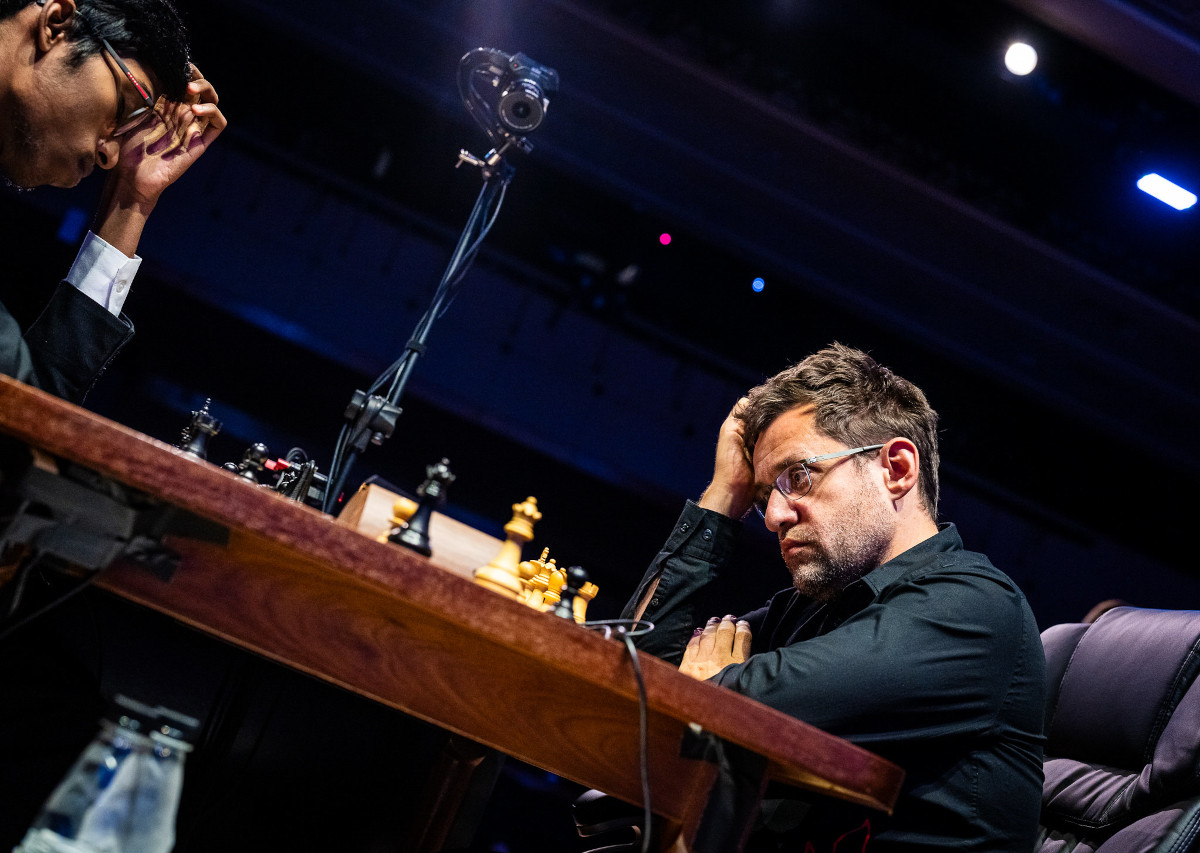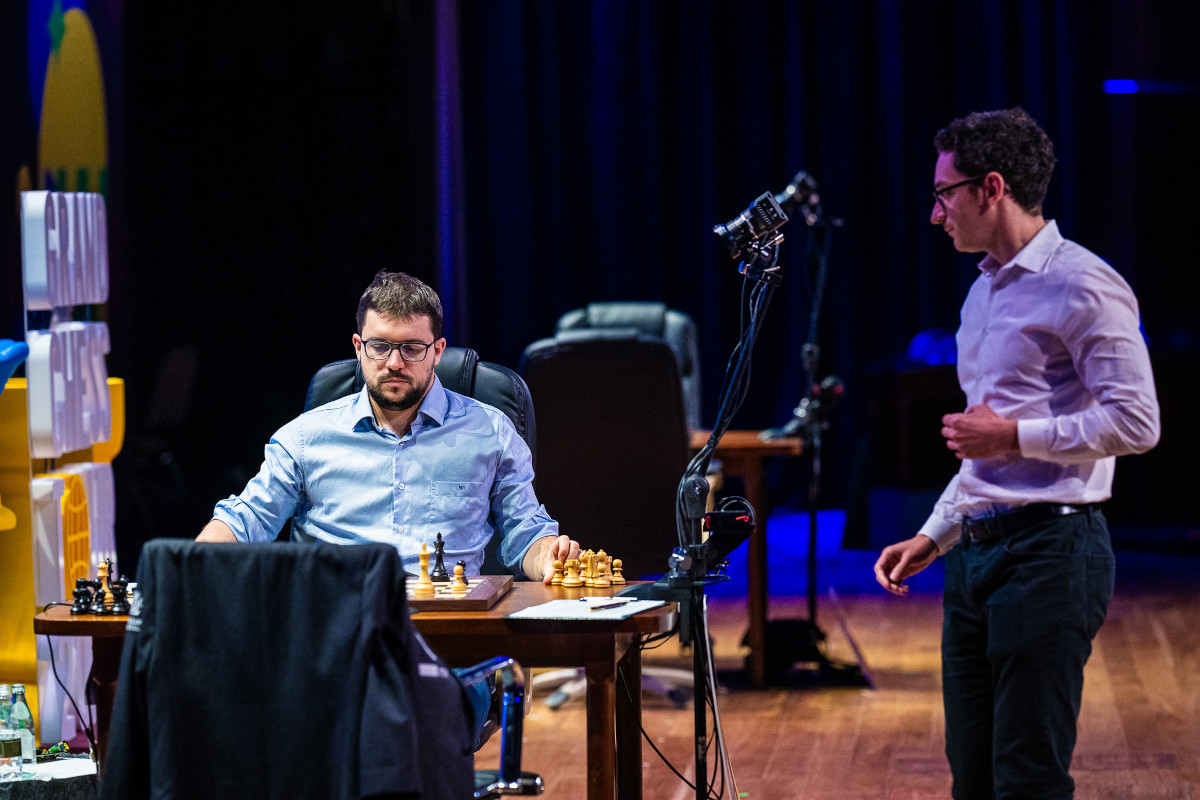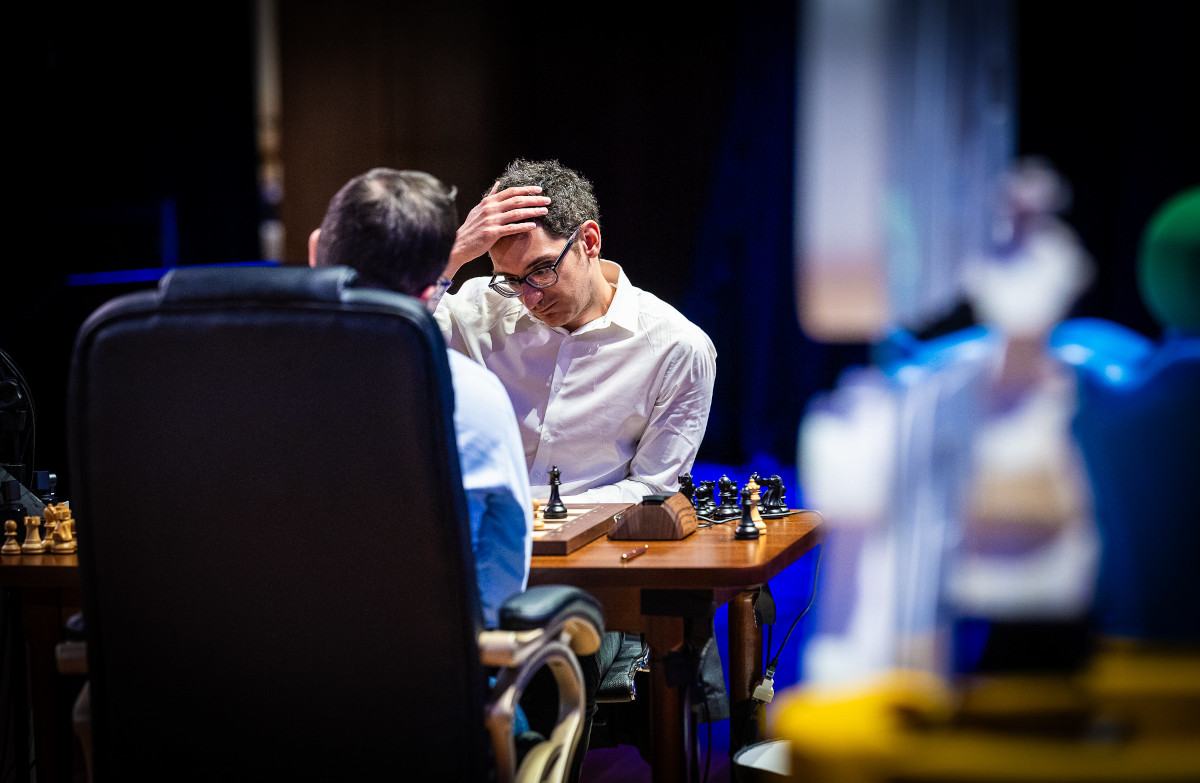Caruana fails to convert favourable queen endgame
The first classical games of both the championship match and the contest for third place took place on Wednesday in São Paulo. Both encounters ended in draws, but the manner in which they unfolded was quite different. On the one hand, Levon Aronian and Praggnanandhaa Rameshbabu reached equality almost without incident, while on the other Fabiano Caruana and Maxime Vachier-Lagrave played out a marathon struggle that lasted more than five hours.
In the match for third place, Aronian had the white pieces against Praggnanandhaa. The game began with a Sicilian Defence, but the Armenian grandmaster was unable to generate pressure. Pragg was able to play the central break 10…d5 comfortably, a thematic resource in many Sicilian lines, which allowed him to solve his opening problems straight away.
From there the game moved quickly towards simplification: queens were exchanged on move 15, and the pawn structures soon mirrored one another.
With bishops of the same colour and no weaknesses to play against, neither side had any prospects for progress. The players continued until move 46, but the outcome was never in doubt, and the draw was agreed. Pragg will get the white piece in the second classical game of the match, once again carrying the potential swing of six points before the competition heads into rapid and blitz.

Praggnanandhaa Rameshbabu facing Levon Aronian | Photo: Lennart Ootes
The final between Caruana and Vachier-Lagrave provided a stark contrast. Caruana opened with 1.d4, and rather than entering his trademark Grünfeld Defence, Vachier-Lagrave repeated the Queen’s Gambit Declined, which he has employed consistently in São Paulo.
The first critical moment arrived early, when Caruana introduced the novelty 14.Bd3
This allowed the line 14…Bxg3 15.fxg3 Qg5 16.Qf2, diverging from the more familiar 14.Bxd6 cxd6, which leaves a tense central battle.
The US star continued to play rapidly, showing deep preparation by using hardly any time up to move 25. By contrast, MVL was forced to spend heavily on the clock, finding himself down to just 30 minutes with 15 moves still to reach the time control, while Caruana had over 70 minutes in reserve. Despite this pressure, the French GM found accurate manoeuvres and steered clear of several pitfalls that could have left him with a worse position.
Eventually, all pieces except the queens left the board, but the game had simplified into an ending where Caruana had an extra pawn, doubled on the g-file. On move 36, MVL chose 36…f5, a mistake compared with the stronger 36…Qc3, which would have posed more problems for White.
In this insightful video course, Grandmaster David Navara shares practical advice on when to calculate deeply in a position — and just as importantly, when not to.
Free sample video: Introduction
Free sample video: Invisible moves
This gave Caruana the chance to push in a technically promising queen ending. The American pressed with patience, and the game entered the kind of long endgame often analysed as difficult to win in theory, but with practical chances. According to analysis by GM Karsten Müller (presented below), Caruana missed his final clear winning opportunity on move 67. Vachier-Lagrave continued to defend with great precision, maintaining the balance under sustained pressure.
The struggle finally concluded after 89 moves, with neither side able to break through. The game had lasted more than five hours, and while Caruana might feel he let a win slip away, MVL’s defensive effort ensured that the final remains level. It was a fittingly intense start to the match for the title, as the Frenchman will have white in the second classical encounter.

Amid a tense, lengthy struggle | Photo: Lennart Ootes
Caruana ½-½ Vachier-Lagrave
Analysis by GM Karsten Müller

Fabiano Caruana | Photo: Lennart Ootes
